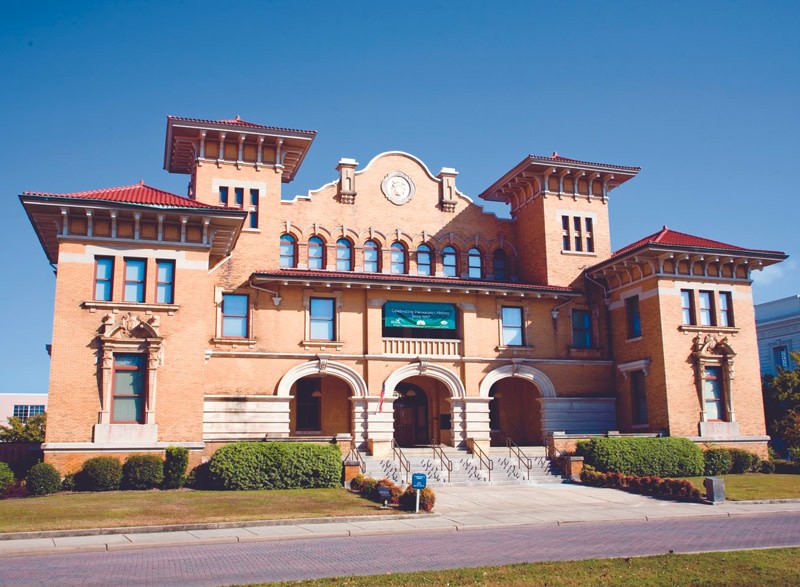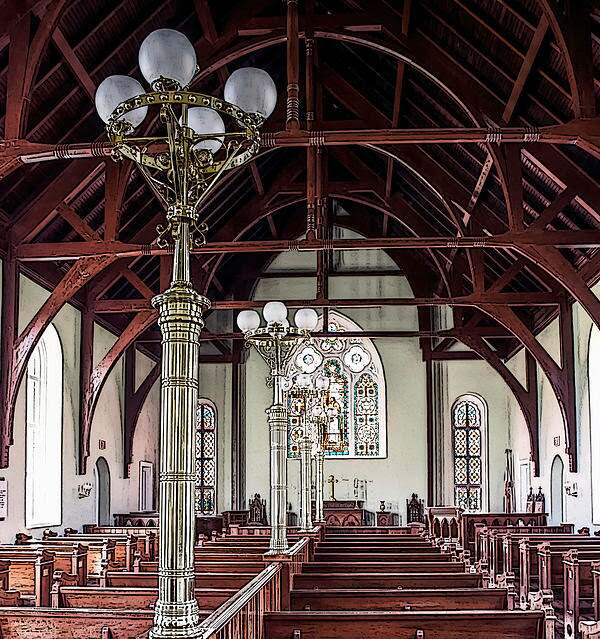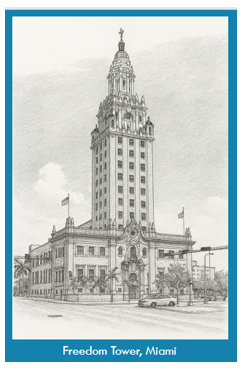- Home
- Florida History
- Florida Heritage Sites
- Pensacola Historic District
PENSACOLA HISTORIC DISTRICT
By Mike Miller November 14, 2025
OVERVIEW
Pensacola Historic District spans 28 blocks around Palafox Street and Seville Square in downtown Pensacola, Florida.
The area has over 500 buildings from the 18th to 20th centuries. Some of these are open to the public. Architectural styles range from Creole to Victorian.
 Pensacola Museum of History, formerly City Hall
Pensacola Museum of History, formerly City HallThe entire district joined the National Register of Historic Places in 1973. Museums and historic houses fill the area. It preserves the city's role as America's first European settlement.
HISTORICAL SIGNIFICANCE
Architecture in Pensacola reflects a variety of influences due to the different countries that ruled it.
Spain founded a settlement at Pensacola Bay in 1559 but it didn’t last long. France claimed it in 1719. Spain rebuilt Fort San Carlos de Austria in 1763.
Britain took control in 1763 and renamed it Pensacola. Loyalists fled there during the American Revolution. Spain regained it in 1781.
Andrew Jackson seized it for the U.S. in 1813. Florida joined the U.S. in 1821. In 1862 during the Civil War Union troops occupied Pensacola. Freed slaves settled nearby. The 1920s boom added Mediterranean Revival structures to the mix.
Many of these culturally diverse residents built homes or other structures in Pensacola. You'll see different architectural styles like Renaissance Revival, Greek Revival, Classical Revival, French Creole, and Folk Victorian.
Notable buildings include the 1805 Lavalle House, a French Creole cottage with tabby walls. The 1832 Old Christ Church survived storms and wars, and its steeple guided ships.
The 1871 Dorr House reflects Greek Revival post-war recovery. The T.T. Wentworth State Museum, built in 1908, holds 100,000 artifacts.
The 1908 Pensacola City Hall now houses the Museum of History. Seville Square hosted markets and executions and is at the heart of Pensacola’s Historic District.
These sites tell the stories of the five flags that flew over Pensacola.
 Old Christ Church in Pensacola, interior
Old Christ Church in Pensacola, interiorVISITING DETAILS
The district centers on Palafox Street, Pensacola, FL 32502. It runs from Garden Street to Government Street. Reach it via I-110 to downtown.
You can drive through the area or walk the brick sidewalks at any time. Download a walking map from the Historic Pensacola website.
Park in free lots at 200 South Palafox or in paid garages nearby if the free spots are full. Explore Seville Square for current events.
Most sites are open Tuesday through Saturday 10 am to 4 pm, and the Pensacola Museum of History is open on Sunday too. Historic Pensacola Village is a good place to start your visit.
Then there’s the Historic House Tour that runs from Tuesday through Saturday at 11 am, 1 pm, and 2 pm and meets at the entrance to the Museum of Industry at 200 E Zaragoza St.
The tour goes through the Lavalle House, Old Christ Church, the Dorr House, and the Lear/Rocheblave House. It’s the only way to see the interior of these properties.
HISTORIC PENSACOLA WEBSITE
LOCATION MAP

Florida is the fastest-growing state in the United States and also the fastest-changing. If you see anything in this article that has changed or is in error, please let me know.
Our free daily Ezine, Florida Heritage Travel, has 12,000 subscribers. We also have 130,000 followers on Facebook who love off the beaten path Florida.
By Mike Miller, Copyright 2009-2025
Florida-Back-Roads-Travel.com
Florida Back Roads Travel is not affiliated with or endorsed by Backroads, a California-based tour operator which arranges and conducts travel programs throughout the world.
